Tipping point: Global food crisis highlights urgent need for programs that offer hope for lasting change

Drought has become a constant for the people of Turkana County in northwestern Kenya, who traditionally relied on herding livestock for their livelihoods. With little rain in the last 5 years, 90% of the population of the region, which borders Uganda, South Sudan and Ethiopia, experience food insecurity.

Apua Loupa in her spinach garden. Loupa and her farming group have learned drip-irrigation techniques to grow vegetables for their families.
Photo credit: ADRA Kenya
Many, like Apua Loupa and Ekaale Eyanae Ekeru, resorted to coping strategies such as burning charcoal—a key contributor to climate change—that afforded their families just 1 meal each day or every second day.
Today, Loupa and Ekeru are participants in a food-assistance project with a difference. Under a program implemented by Adventist Development and Relief Agency (ADRA) Canada and ADRA Kenya that is supported by Global Affairs Canada (GAC) through the Canadian Foodgrains Bank, the program provides cash transfers so people can look after their basic food requirements. At the same time, it offers training, materials and funds to rebuild livelihoods, enabling families to bounce back and meet their needs again.
Loupa, a mother of 7, used some of the money from the Building Resistance Against Crisis Effects (BRACE) project to buy a net so her son can help support the family by fishing in the nearby river. She and her farming group in the village of Loreamatet have also learned drip-irrigation techniques to grow vegetables for their families. There are plans to sell the surplus crop and venture into other income-generating activities.
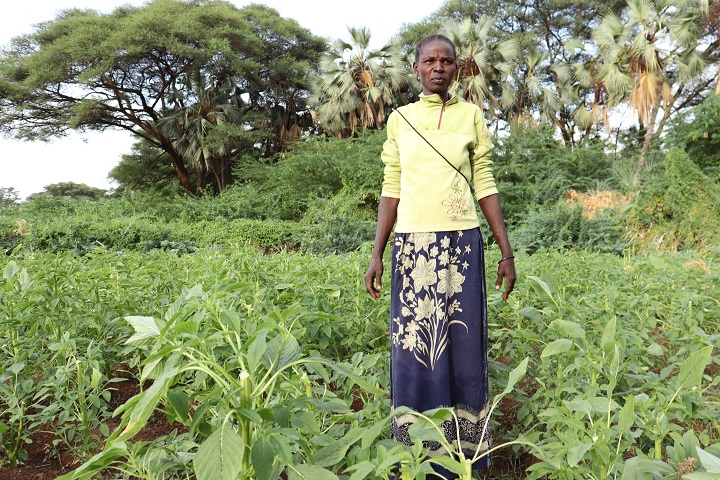
Ekaale Eyanae Ekeru in her black-eyed pea garden. Ekeru has become chair of her local farming group and a lead farmer in her village.
Photo credit: ADRA Kenya
Ekeru, who has 8 children and whose husband is blind—making her the sole source of support for the family—has become chair of her farming group. She says that when the group had a bumper harvest of black-eyed peas, spinach, onions, amaranth and watermelon last year, “it was a dream come true.” She used funds from the sale of the produce to buy a solar panel to power her irrigation system and constructed a shallow well for a continuous water supply.
These improvements have “catapulted me to train my fellow farmers and community at large on good agricultural practices,” says Ekeru, now a “lead farmer” in her village of Nabulon. “I am empowered, and I can go on with my farming to sustain myself and my family.”
As increasing numbers of people around the world face food insecurity, such successes made possible by GAC’s Humanitarian, Early Recovery and Development program offer hope for lasting change.
Crises bring food insecurity
With intertwined crises—conflict, climate change, COVID-19 disruptions, economic volatility and the invasion of Ukraine—straining the world’s food systems, hunger and malnutrition are on the rise. The World Food Programme reports that 349 million people in 82 countries face acute food insecurity, a record high, with 50 million of them at the brink of famine.
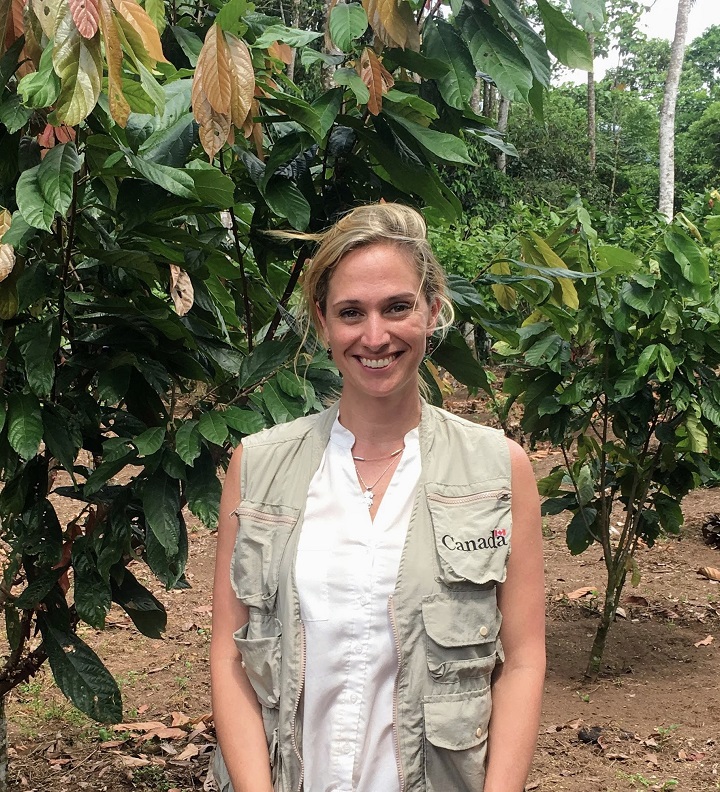
Corry Van Gaal says “there’s enough food in the world; how it is distributed is the question.”
Photo credit: Courtesy of Corry Van Gaal
“The world is at a tipping point,” says Corry Van GaalFootnote 1, Deputy Director of the Agriculture and Finance Program in GAC’s Food Security Division and Chair of the Global Agriculture and Food Security Program (GAFSP). She says that while local and global shocks such as supply-chain breakdowns, growing poverty and biodiversity loss have exacerbated food insecurity, “there’s enough food in the world; how it is distributed is the question.” This means that alongside a humanitarian response, investments are needed to increase agricultural productivity and food-system resilience. “We must do more and do it better and faster.”
GAFSP was established by the international community to coordinate donor funding in response to the 2008 food crisis. Since 2010, the program has invested $2.7 billion in strengthening food systems in some 50 low-income countries, particularly by championing inclusive, locally driven, gender-transformative approaches. The goal is to “put countries in the driver’s seat,” Van Gaal says, letting them identify their needs and ensuring their voices “are heard loud and clear.”
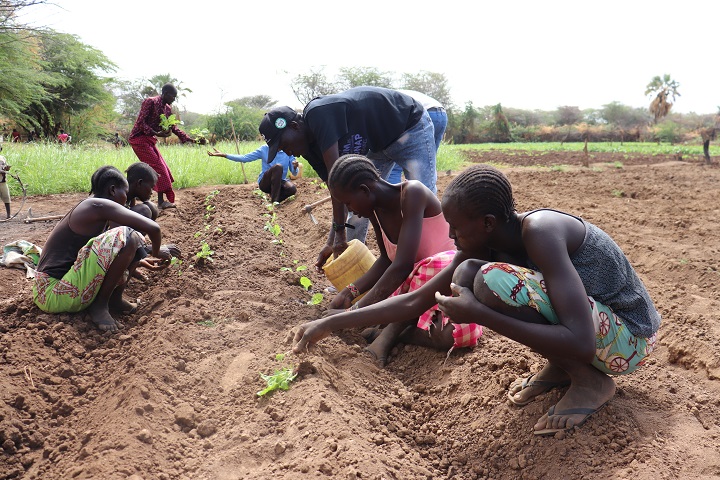
Seedlings of spinach are transplanted into a field.
Photo credit: ADRA Kenya
Canada became chair of the program in 2022, making the country a key player in efforts to coordinate responses to the global food crisis. Van Gaal points out that the vast majority of the funds currently go toward humanitarian needs, with only a fraction focused on building resilience over the long term.
“Now more than ever, Canada needs to work in a coordinated way with other donors to support the national agriculture plans of developing countries vulnerable to food insecurity,” she says. “Without long-term investments in food storage, farmer productivity and local food production, the world will simply go from crisis to crisis.”
Stopping the pattern

Stefan Epp-Koop is the humanitarian and nexus program manager for the Canadian Foodgrains Bank.
Photo credit: Zimbabwe Council of Churches
Stopping that pattern is the goal of “nexus” projects that combine humanitarian and development programming overseen by the Canadian Foodgrains Bank (CFGB), a partnership of 15 Canadian church-based agencies working to end global hunger. The Winnipeg organization was started in 1983 to send surplus Canadian grain to developing countries, notes Stefan Epp-Koop, its humanitarian and nexus program manager. Today, its member agencies and local partners purchase all the food they provide right in the 30 to 40 countries where they operate—with growing urgency.
“The key piece right now is getting people humanitarian assistance,” comments Epp-Koop. “We’re fighting a fire.” Meanwhile, CFGB member agencies are currently implementing 10 nexus projects in 8 countries—like BRACE in Kenya—that provide humanitarian assistance while enabling recipients to diversify their livelihoods.
As well as providing people with cash or food, the projects typically offer training in agricultural techniques that make farms more resilient in erratic rainfall, improving yields and making the farms more sustainable. The projects also help participants diversify their livelihoods through savings-and-loan groups and support the establishment of small businesses. Another approach pays people to rehabilitate assets that can increase the community’s food security by, for example, improving irrigation systems. At the same time, the projects work with community champions to raise awareness of underlying issues, like gender inequality, that can limit people’s access to nutritional foods.

A farming group in Kenya’s Turkana County work together to transplant seedlings of onions into a field.
Photo credit: ADRA Kenya
Such Canadian efforts can have an impact in regions and countries and even globally, Epp-Koop says. He notes that a recent CFGB program supported by Global Affairs Canada focused on conservation agriculture in Ethiopia, Kenya and Tanzania prompted the Ethiopian government to embrace the practice. Conservation agriculture helps farmers get better yields and protect the environment using methods such as leaving soils as undisturbed as possible. Ethiopia previously had a long tradition of extensive ploughing, says Epp-Koop, so it was a big change for it to officially accept this new way of doing things. CFGB is helping to develop promotional materials and a master trainer program on the topic for the country’s 80,000 extension workers.
Canada has much to offer
Van Gaal notes that Canada has much to offer food systems throughout the world. For instance, she feels that smallholder farms in developing countries would benefit from having access to risk insurance, cooperatives and other supports available to farmers in Canada. About 80% of the crops grown around the world are rain-fed, she says. With climate change making it harder to get and predict proper rainfall, in addition to supply-chain issues and escalating input costs, “a lot of farmers are deciding it’s too risky to grow food.”
Agriculture was a prominent issue at the recent climate change conference in Sharm el-Sheikh, Egypt, she notes, especially the need for climate-adaptation finance for farmers in developing countries. “There are so many ways in which farms can be better adapted,” Van Gaal explains, from using “climate-smart” agriculture methods to improving crop storage, all of which Canadians can help with. Canada has agricultural technology accelerators and research on soil health that could be tailored to local situations.
She says women are heavily involved in agriculture—for example, they grow 70% of the food in Africa—so addressing gender inequality is also critical. At least 80% of Canada’s climate-finance projects are meant to integrate gender, and the number is even higher than that, she points out. Our feminist international assistance policy focuses on empowering women to play decision-making roles on matters from nutrition to sustainable agricultural methods. Van Gaal would also like to see greater priority given to improving women’s land-tenure rights in the countries Canada assists.
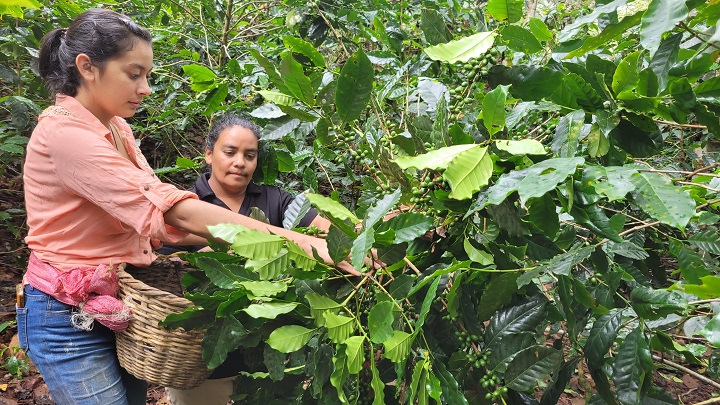
A recent project implemented by Quebec-based SOCODEVI in Honduras helped women to establish farms there through long-term land-use agreements called “commodates”.
Photo credit: SOCODEVI
In rural Honduras, for example, a recent 5-year project implemented by Quebec-based SOCODEVI, with support from Global Affairs Canada, has helped women to establish farms there. Through the Canada-Honduras Value-Added Agroforestry (CAHOVA) project, long-term land-use agreements called “commodates” allow plots of land to be loaned to women and young people for free by their husbands and extended families. More than 640 of these agreements have enabled the cultivation of 428 hectares of agroforestry systems with crops like coffee, cocoa and rambutans.
Serge Lantagne, SOCODEVI’s project manager for CAHOVA in Honduras, says participants received instruction in agricultural production techniques, as well as gender-equality and environmental training. Women who took part in the project have greater autonomy in decision making on farms, he says, and the incomes of participating families increased by 36%.
Unlocking out-of-the-box ideas
Innovative thinking is important for change, says Van Gaal, noting that it’s critical to engage the private sector in developing solutions that affect low-income countries. Governments often need to make the initial investments, “so we’re providing the venture capital, if you will,” she says. Prize-based challenges can be helpful in unlocking out-of-the-box ideas.
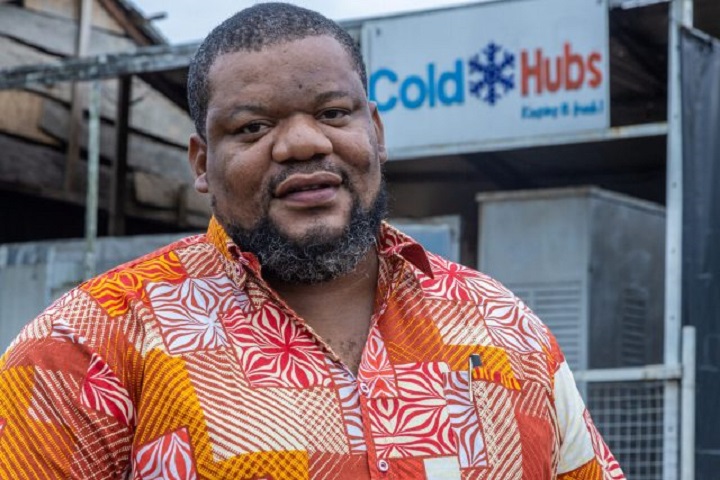
Nnaemeka Ikegwuonu is founder and CEO of ColdHubs Ltd., a cold-chain firm in Nigeria that makes solar-powered cold-storage facilities to keep foods fresh in remote areas.
Photo credit: ColdHubs Ltd.
One such company is ColdHubs Ltd., a cold-chain firm in Nigeria that makes solar-powered cold-storage facilities to keep foods fresh in remote areas. It has been supported by Creating Hope in Conflict: a Humanitarian Grand Challenge, a not-for-profit organization that, with support from Global Affairs Canada, sources, supports and scales innovations to improve the delivery of humanitarian aid.
Nnaemeka Ikegwuonu, founder and CEO of ColdHubs, learned when he was working as an agricultural radio broadcaster that food spoilage was a major challenge for small-scale farmers around his home of Owerri in southeastern Nigeria. Owerri is 12 hours by road from the country’s main city of Lagos. In 2014, Ikegwuonu created a walk-in room cooled by a window air-conditioning unit running on solar panels. He’s now improved and commercialized the technology as a “pay-as-you-store” service in places such as farms and farmers’ markets. He plans to bring his invention to countries around Africa and beyond.
A 2019 report by the Food and Agriculture Organization noted that 14 per cent of the world's food, valued at $550 billion per year, is lost after harvesting, before it reaches shops.
“It’s impossible to realize food security without food storage,” Ikegwuonu says. “The ability to extend the shelf life of highly perishable food gives you time to actually plan for the next supply.”
Local initiative, wide reach
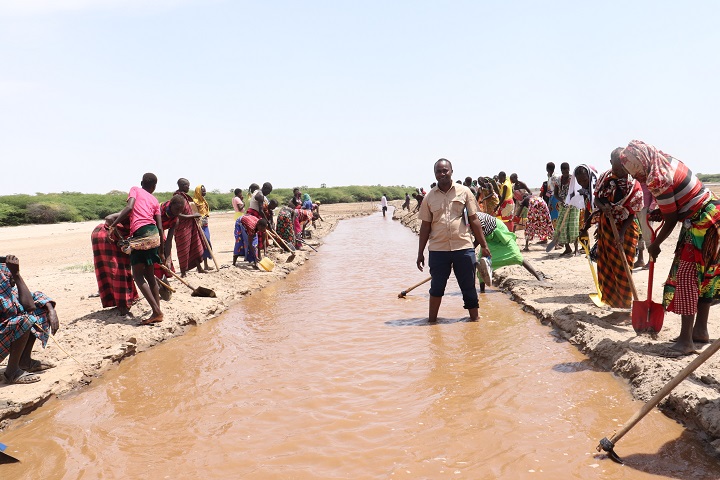
David Kitheka, manager of the BRACE project for ADRA Kenya, stands in an irrigation channel that is being de-silted to improve the flow of water.
Photo credit: ADRA Kenya
David Kitheka, who works for ADRA Kenya managing the 33-month BRACE project, believes initiatives such as that one in Turkana can have a wide reach. For example, a network of gender champions there has been trained on gender-related matters and works to sensitize the community to gender-based violence. Kitheka says even after 5 consecutive failed rain seasons, many people in the pastoral community were initially skeptical about adopting the new vegetable-production technologies. But the recent success of the farms has changed minds.
Jackline Lomelo, who started a tomato farm, says she’s doing so well that “I’m able to pay the school fees for my children and even share food with my neighbours.” She has bought several properties, including the piece of land where she grows tomatoes.

Jackline Lomelo at her farm in Nabulon, Kenya, where she grows tomatoes and other vegetables.
Photo credit: ADRA Kenya
Such farmers act as community resource persons, encouraging people to embrace farming to fight hunger. The project also includes village savings-and-loan schemes for all participants, Kitheka adds. “They can apply and get loans whenever need arises. This way, they will be able to start diversifying their livelihood sources.”
Van Gaal says people around the world “need a certain amount of access to locally grown foods to have food security.” Therefore, it’s important for countries to restore or maintain the health of their land through development support.
“We have the solutions, we just need to find ways to get them to the right place at the right time,” she says. This means developing better collaboration between the public sector, donors and the private sector and more approaches that help countries support their agricultural sectors.
While food insecurity has reached crisis proportions, that has also brought greater awareness of the importance of farming as a solution, Van Gaal adds. “There’s a lot of momentum and a lot of will to address this situation and some of the root causes. That’s encouraging.”
- Date modified: